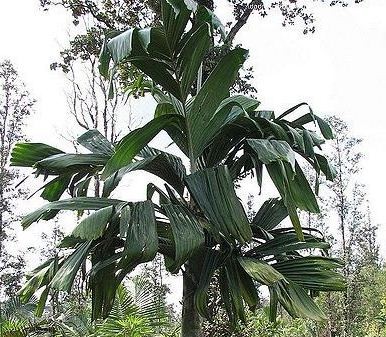Hydriastele beguinii
(Hydriastele beguinii)

Description
Hydriastele is a diverse and widespread genus of flowering plant in the palm family found throughout Australia and New Zealand, Melanesia, Polynesia, and Southeast Asia. It consisted of just nine species until 2004, when molecular research, supported by morphologic similarities, led taxonomists to include the members of the Gulubia, Gronophyllum, and Siphokentia genera. 48 species are now recognized, of which 38 are new combinations, two are new names and one is a new species. It is named in Greek, combining "hydriad", a water nymph in mythology, and "column". The palms now classified in this genus have uniting traits but are nonetheless diverse. Pleonanthy, monoecy, crownshafts, peduncular bracts, and the lack of armament characterize all members. The trunks may be solitary or suckering and may be diminutive to robust, spanning a range of heights. The leaves are pinnate and widely varied. The inflorescences are branched to three orders with both male and female flowers, some of which are beetle-pollinated. The fruit may be ellipsoidal or spherical and colored yellow, orange, red, purple, or black when ripe, each with a single seed. Their known natural range includes a number of tropical settings in Sulawesi, the Maluku Islands, New Guinea, Australia, the Bismarck Archipelago, the Solomon Islands, New Hebrides, Fiji, and Palau. Very often they are found in rain forests of the montane and low lying varieties or upon ultrabasic rock, limestone ridges and serpentine faces. Several of these palms are cultivated and typically require conditions resembling those of their range. The trunks of some species are used as wall and floorboard components in house construction or split and fashioned into spears.
Taxonomic tree:







